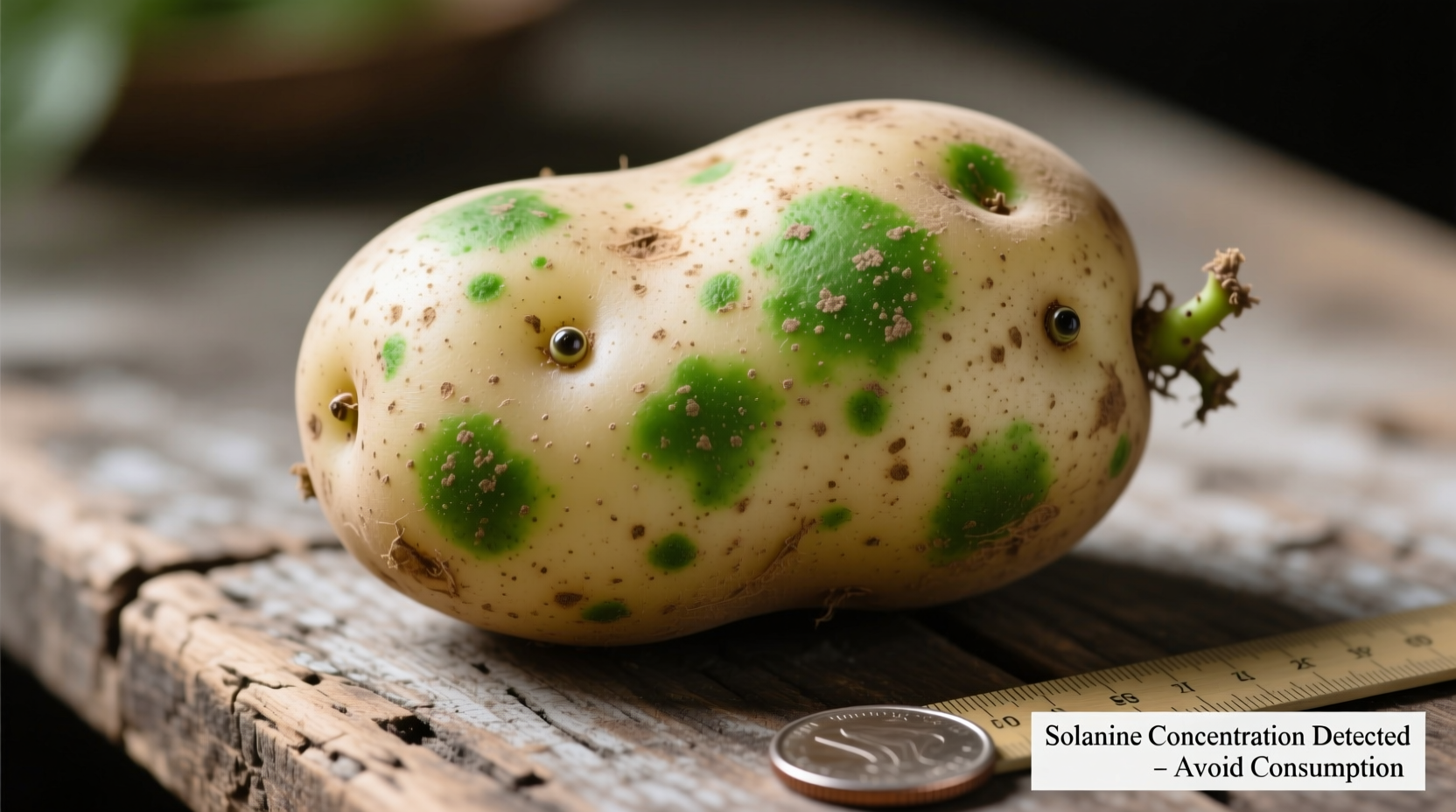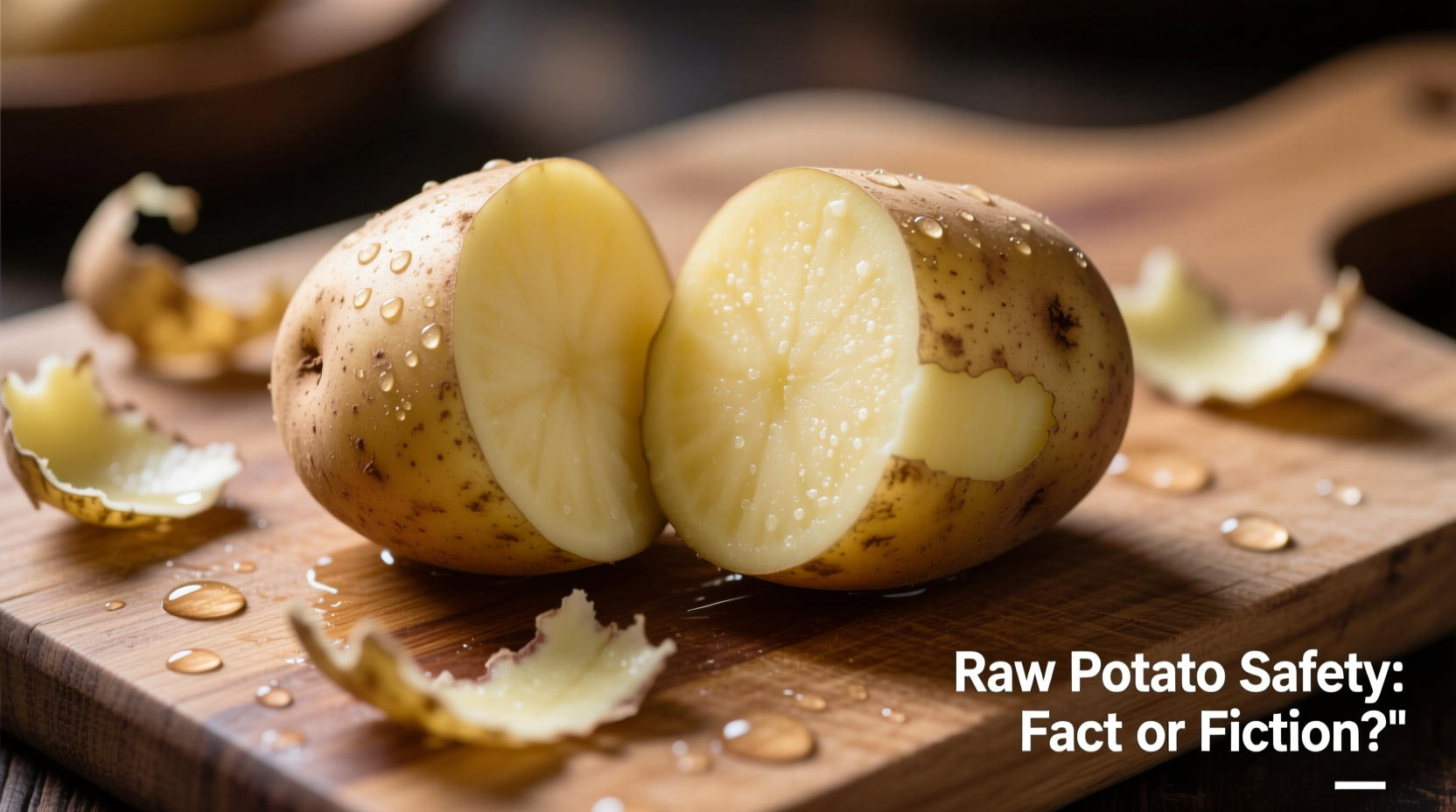The Hidden Dangers in Your Raw Potato
When you're tempted to snack on a raw potato straight from the bag, you're unknowingly exposing yourself to potentially harmful compounds that nature designed as plant defenses. Unlike most vegetables you might eat raw, potatoes contain two primary compounds that make uncooked consumption risky: solanine (a glycoalkaloid) and lectins (a type of protein). These substances serve as the potato's natural protection against pests and pathogens, but they can cause significant discomfort when consumed by humans in their raw form.
Why Solanine Makes Raw Potatoes Risky
Solanine concentrates primarily in the potato's skin and just beneath it, with higher levels developing when potatoes are exposed to light (causing that characteristic green tint). According to research from the U.S. Food and Drug Administration, solanine levels above 20-25 mg per 100 grams of potato can cause adverse effects in humans. Green potatoes can contain up to 1,000 mg per 100 grams—well above safe consumption levels.
| Potato Condition | Solanine Level (mg/100g) | Human Safety Threshold |
|---|---|---|
| Fresh, properly stored | 2-13 | Generally safe |
| Sprouting potatoes | 20-100 | Moderate risk |
| Greened potatoes | 250-1000 | High risk |
| Cooked potatoes | 5-15 | Generally safe |
Symptoms Timeline: What Happens After Eating Raw Potatoes
Understanding the progression of symptoms can help you determine when to seek medical attention. Based on data from the Centers for Disease Control and Prevention, here's what typically happens:
- 15-30 minutes: Initial stomach discomfort, mild nausea, or metallic taste in mouth
- 1-2 hours: More pronounced gastrointestinal symptoms including vomiting, diarrhea, and abdominal cramps
- 4-8 hours: Neurological symptoms may develop including headache, dizziness, and in severe cases, confusion or hallucinations
- 12+ hours: Most symptoms subside, though complete recovery may take 24-48 hours

When Raw Potatoes Might Be Less Risky (With Important Caveats)
While we strongly recommend cooking potatoes before consumption, certain contexts might present lower risk:
- Small amounts in specific preparations: Some traditional recipes like German Kartoffelsalat use minimally cooked potatoes, but never truly raw
- Young new potatoes: These contain lower solanine levels but still carry lectin risks
- Properly stored white potatoes: Those without green spots or sprouts have lower toxin levels
However, even in these scenarios, raw consumption isn't recommended for children, pregnant women, or those with compromised digestive systems. The USDA Agricultural Research Service notes that cooking reduces solanine content by 40-60% while making nutrients more bioavailable.
Safe Preparation Methods That Maximize Benefits
Proper cooking transforms potatoes from potentially problematic to nutritious:
- Peeling: Removes up to 90% of solanine concentrated in the skin
- Boiling: Reduces solanine content while preserving water-soluble vitamins
- Baking: At temperatures above 170°F (77°C) significantly reduces harmful compounds
- Storage: Keep potatoes in cool, dark places to prevent solanine development
What to Do If You've Eaten Raw Potatoes
Most cases of raw potato consumption result in mild symptoms that resolve with time. However, take these steps:
- Monitor for symptoms, especially if you consumed green or sprouted potatoes
- Stay hydrated with clear fluids if experiencing vomiting or diarrhea
- Contact poison control (1-800-222-1222 in the US) if severe symptoms develop
- Seek immediate medical attention for neurological symptoms or severe dehydration
Raw vs. Cooked: Nutritional Comparison
Cooking doesn't just reduce risks—it enhances nutritional value. Research published in the Journal of Agricultural and Food Chemistry shows that cooking increases the bioavailability of key nutrients:
- Vitamin C: Raw potatoes contain more, but cooking makes remaining vitamin C more absorbable
- Potassium: Cooking increases potassium availability by breaking down cell walls
- Digestibility: Cooked starch is 3-4 times more digestible than raw potato starch
- Antioxidants: Certain cooking methods increase antioxidant activity by 25-50%
Common Questions About Raw Potato Consumption
Can you get food poisoning from raw potatoes?
Raw potatoes don't typically cause bacterial food poisoning like undercooked meat, but they can cause solanine poisoning with symptoms resembling food poisoning including nausea, vomiting, and diarrhea. This is a chemical toxicity rather than bacterial contamination.
How much raw potato is dangerous to eat?
Consuming more than 2 mg of solanine per kilogram of body weight can cause symptoms. For a 150-pound adult, this means eating approximately 2-5 raw potatoes with normal solanine levels, or just one severely greened potato. Children are at higher risk due to lower body weight.
Are sweet potatoes safe to eat raw?
Unlike regular potatoes, sweet potatoes are generally safe to eat raw as they don't contain solanine. However, they contain complex starches that are harder to digest raw, potentially causing bloating or gas in some people. Cooking improves both digestibility and nutrient absorption.
Does washing raw potatoes remove the toxins?
No, washing doesn't remove solanine or lectins as these compounds are inside the potato tissue. Peeling can remove some solanine (concentrated in the skin), but cooking is the only effective method to significantly reduce these compounds. Water-soluble toxins would be reduced by boiling, but solanine isn't water-soluble.











 浙公网安备
33010002000092号
浙公网安备
33010002000092号 浙B2-20120091-4
浙B2-20120091-4